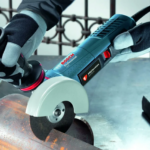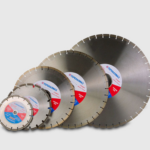If such a nuisance like a crack appeared on the ceiling, you will have to make efforts to eliminate it. But before that, you should make sure that the crack has ceased to increase in size. The fact is that until the crack is completely formed, it is actually pointless to repair it, since it will appear again in the same place after some time.
So that the solution clashes well with the surfaces inside the gap, it must be cleaned and more. This is done by any tool that is at hand. It can be a knife or a small spatula. In the process, the crack should be examined carefully to find all the weak areas. If the areas adjacent to the crack are poorly held. they need to be repulsed by a chisel.
When the crack on the ceiling is cleaned, it is primed with impregnations for mineral surfaces. After that, dust and garbage will not remain inside the crack, and it itself will be strong and reliable, without crumbling areas. Only after such preparation can you begin to fill the crack with a solution.
As for the materials for filling the cracks on the ceiling, this is an important nuance, which must be approached carefully. The best option here will be a putty specially designed for cracks. This material differs from the usual solutions in that it has increased elasticity. And in this situation, the elasticity of the solution is a key point that guarantees that the crack will not appear in the same place.
So, the crack on the ceiling needs to be filled with putty for cracks. After that, it will also have to be strengthened with a masking grid or gauze. Such “reinforcement” will be the key to high -quality repair. Moreover, it must be understood that the gauze or a metal grid should overlap the crack existing on the ceiling completely and go along the edges, at least two centimeters. Glued a grid or gauze for putty. That is, for this it is not necessary to use extraneous materials or glue.
If the crack is very large and deep, you will have to fill it with putty in several times. If you fill a large crack on the ceiling with a large amount of putty, it can elementarily fall under its own weight. And even if the putty does not fall out, it will sag a little, which will worsen the quality of the repair. That is why the masters fill large cracks in stages.
When everything is ready, a thin layer of putty or gypsum mixture is placed on top of a painting grid or gauze or gauze. And when this layer of solution dries, it is necessary to grind with sandpaper or the same painting grid. The crack repair will be completed on this.





